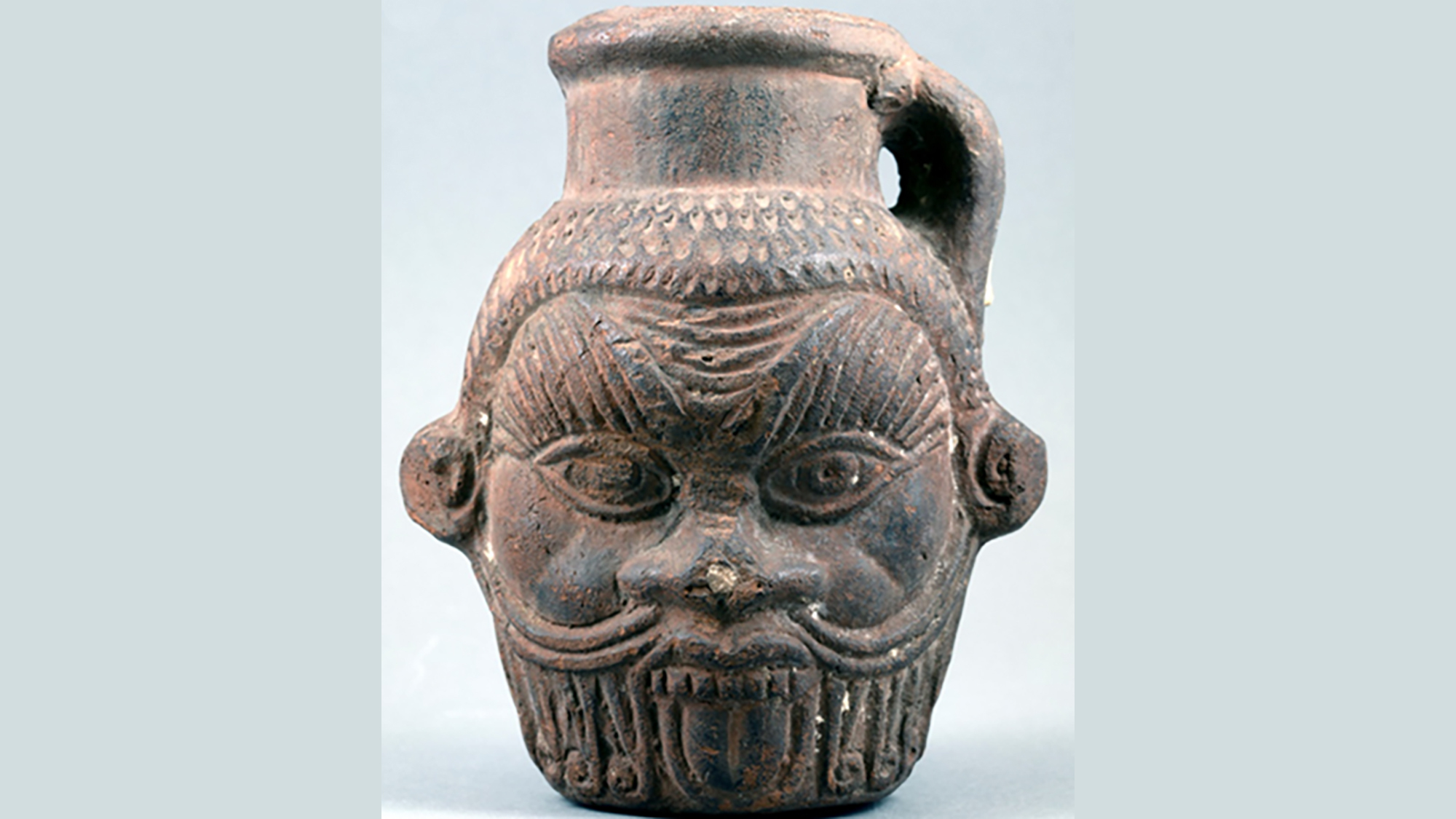

The history of religion in ancient Egypt is full of fascinating details and mysteries. While some of the Egyptian gods, take Osiri or Isis, are relatively well known, there are certainly some that are far from common knowledge. For example, Bes, the deity of music, merriment, and childbirth. This god was depicted as a long armed, imperfect, “dwarf-like” being, according to the Rosicrucian Egyptian Museum. Worship of the god was brought by Phoenicians as far as Spain’s Balearic islands, notably to Ibiza or the “Island of Bes.”
[Related: Ancient Egyptians had a unique way of mummifying crocodiles.]
Many cups and vessels were fashioned in the shape of Bes’s head, with the hope that the liquid inside would contain healing properties.According to a preprint study published to Research Square, traces of hallucinogenic plants were found in sampled residues of a Bes vessel dated back to second century BCE, also known as the Ptolemaic dynasty (if that sounds familiar, it’s likely because Cleopatra was the last queen of the iconic empire).
Researchers from Florida and Italy started their journey by analyzing the DNA inside of a vase housed in the Tampa Museum of Art. This vase had come into the museum’s possession in 1984 from a private collection. Records show it was purchased in Cairo in 1960 and found in the Fayum district, a region appropriately known for its fertile land for farming.

In the vase, the researchers found traces of two intriguing plants—first the Syrian rue, which causes stimulating and hallucinogenic effects in humans at low doses. The second, the blue water lily, which has psychoactive properties and has been used throughout history in traditional medicine to help with woes like sleep deprivation and anxiety.
[Related: Tomb of a forgotten queen is one of several new stunning Egyptian discoveries.]
Beyond just mind-bending plants, the Bes-shaped jug had traces of fermentation yeast, sesame seeds, wheat, fruit, honey and “human proteins.” Sometimes, these human proteins come from skin, and are classified as contaminants, according to the paper. But these were a “deliberate addition”, the authors write, considering the proteins likely came from breast milk, oral or vaginal fluids, and blood.
The odd mix led the authors to believe this was likely a ceremonial drink linked to the “Myth of the Solar Eye” where Bes fielded off the wrath of bloodthirsty Hathor with an alcoholic drink disguised as blood.
